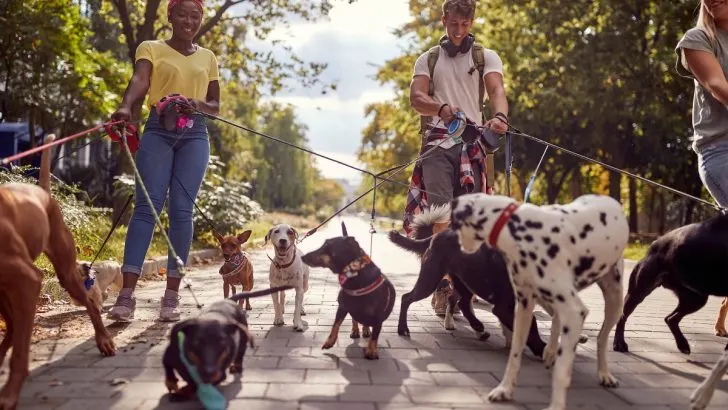Curious about which dog breeds have the shortest lifespans and face unique health challenges?
This can be a very important consideration for potential pet owners and dog lovers alike. It’s a thought that can really pull at your heartstrings.
Well, our article on the dog breeds with the shortest lifespan reveals more than just their life expectancy. We write more about the reasons behind their limited time with us.
Understanding these aspects can help us provide the best care possible for these breeds.
Dive in to discover more !
What Dogs Have The Shortest Life Span?
Dogs are wonderful creatures that enrich our lives with loyalty and boundless affection.
However, the joy they bring is often accompanied by the sad reality of their relatively short lifespans. In the canine world, there are some dog breeds that live shorter than the others due to various reasons.
For example, large breeds may be prone to heart disease, bone problems, and bloat due to their size.
Brachycephalic dogs (dogs with flat noses), such as Bulldogs, Pugs, and French Bulldogs, often have shorter lifespans due to respiratory issues.
Their short skulls and compressed airways, can lead to breathing difficulties, overheating, and heart problems. Their unique facial structure can also contribute to dental issues and eye problems.
These health challenges can reduce their quality of life and unfortunately shorten their lifespan.
1. Saint Bernard
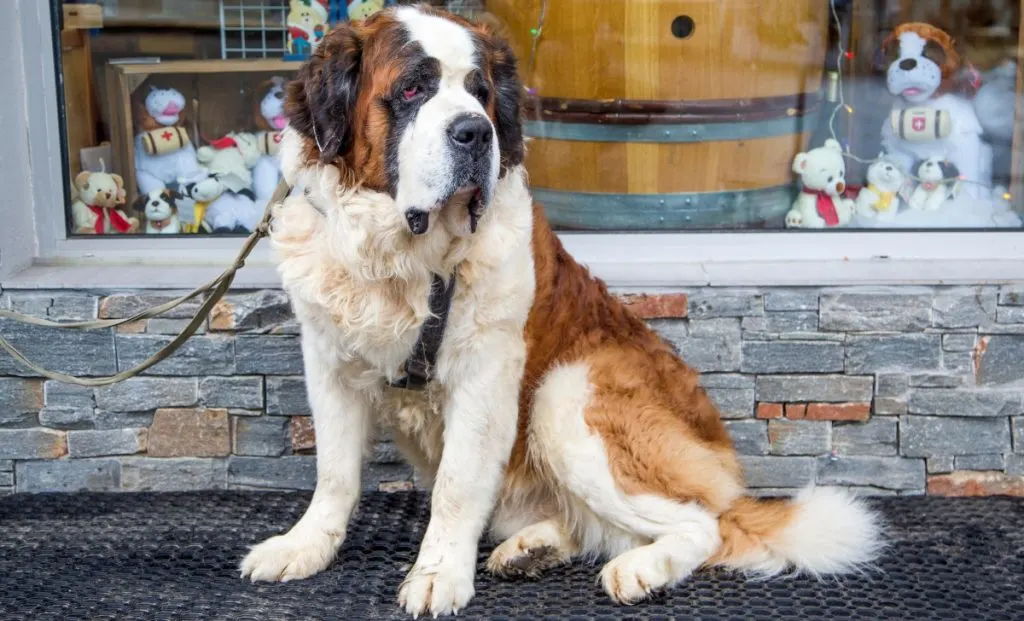
Life Expectancy: 8 – 10 years
Saint Bernards are massive yet gentle dogs. They are famous for their kind demeanor, iconic appearance, and history of serving as rescue dogs in the Swiss Alps
They have a shorter life expectancy compared to some other breeds due to their large size and genetic predispositions to certain health issues.
Some common health concerns in Saint Bernards include bone problems like hip dysplasia and elbow dysplasia, heart conditions such as dilated cardiomyopathy, and certain types of cancer.
Their rapid growth rate during puppyhood can put strain on their joints and skeletal structure, leading to potential mobility issues later in life.
2. Bernese Mountain Dog
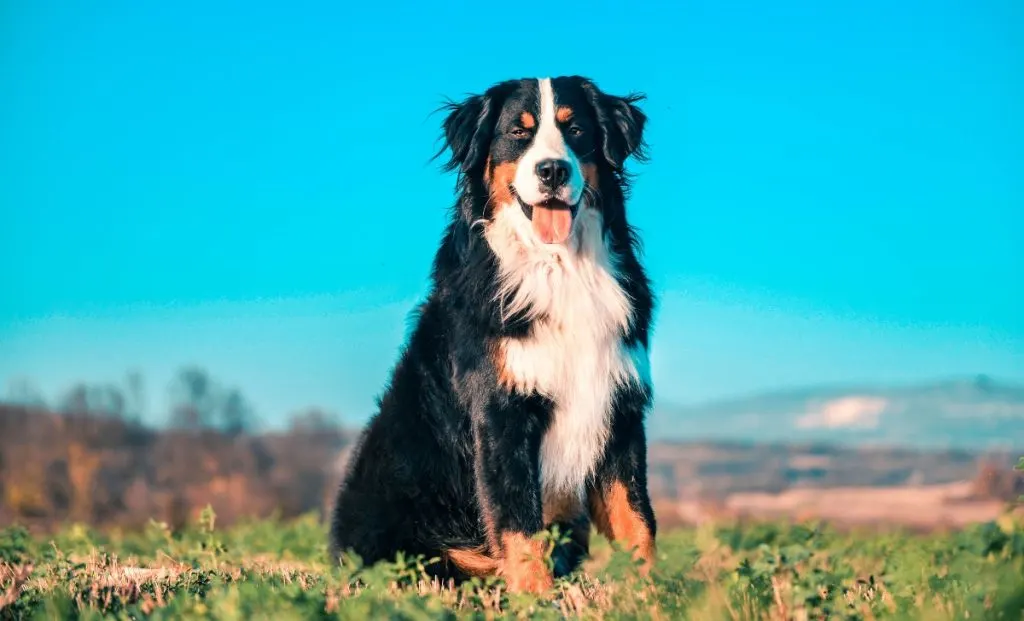
Life Expectancy : 8 – 9 years
The Bernese Mountain Dog is a sturdy and affectionate breed. They are known for their striking tri-colored coat, calm temperament, and strong loyalty to their family.
They have a shorter lifespan compared to some due to a combination of genetic factors and health issues inherent to the breed.
These gentle giants are prone to various health conditions, including certain types of cancer such as histiocytic sarcoma and mast cell tumors.
They commonly suffer from bone problems like hip dysplasia and elbow dysplasia, which can affect their mobility and quality of life.
3. Irish Wolfhound
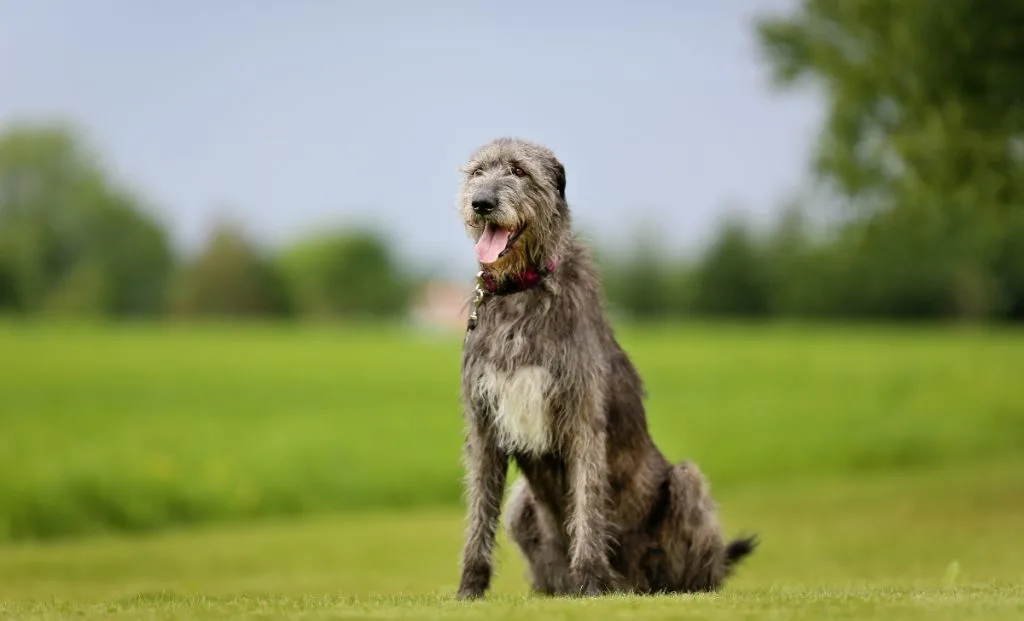
Life Expectancy: 6 – 10 years
Irish Wolfhounds are a large breed of dog originating from, you’ve guessed it, Ireland.
They are known as the tallest dogs in the world, with a height span of 30 to 35 inches. Besides their impressive size, these pups have a gentle temperament, and historical role as hunting and guardian dogs.
One significant factor that affects their lifespan is their large size, which can put strain on their skeletal structure and organs.
Irish Wolfhounds are predisposed to certain types of cancer, including osteosarcoma (bone cancer), which can significantly impact their lifespan.
4. Greater Swiss Mountain Dog
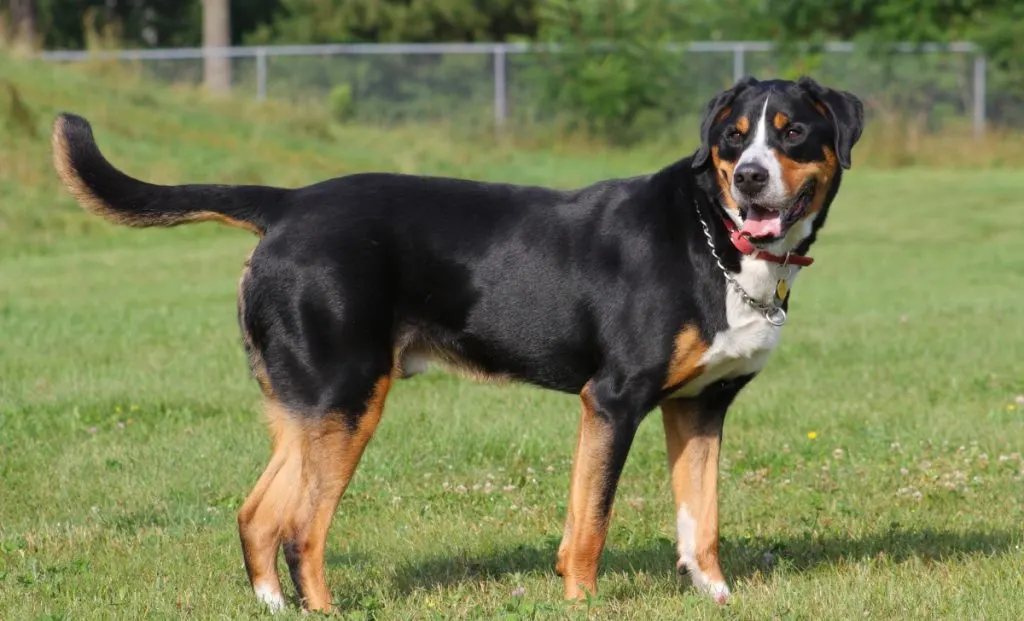
Life Expectancy: 10 – 11 years
Greater Swiss Mountain Dogs are one of the oldest and largest Swiss mountain dog breeds, dating back over 2,000 years.
They were originally bred as multipurpose farm dogs. As you may have guessed, these dogs helped humans with tasks such as herding livestock, pulling carts, serving as loyal guardians, and companion dogs.
They are prone to problems such as hip dysplasia, elbow dysplasia, and bloat.
This breed also has a genetic predisposition to hemangiosarcoma, a type of cancer that originates in the blood vessels, specifically in the cells lining the blood vessels.
5. Great Dane
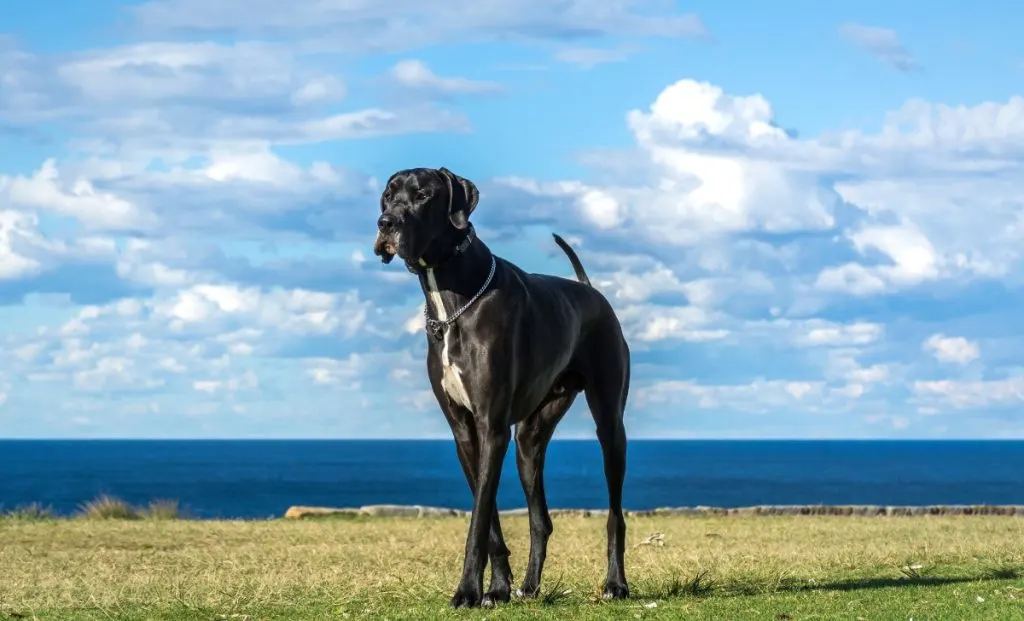
Life Expectancy: 7 – 10 years
Despite their imposing size, Great Danes are often referred to as “gentle giants” due to their calm and friendly demeanor. They are great dogs, but it makes us all sad that their lifespan is so short.
In fact, they often have the shortest life expectancy in the canine world. Previous studies also show that these dogs may start developing health problems from an early age.
Their large size is behind most of the health issues. Aside from skeletal problems, they are predisposed to heart problems, including dilated cardiomyopathy, a condition common in Great Danes.
6. Neapolitan Mastiff
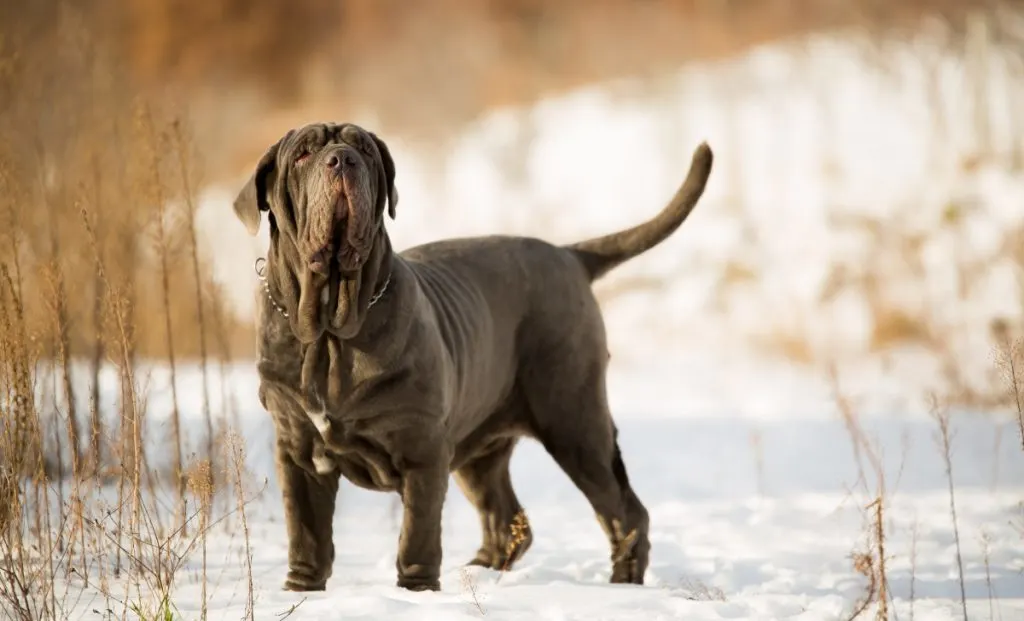
Life Expectancy: 8 – 10 years
Neapolitan Mastiffs’ distinctive loose, wrinkled skin served a practical purpose in their historical role as guardians and protectors.
Such wrinkled skin also made them predisposed for infections and eye problems. However, that is not the reason for their short lifespan.
Neapolitan Mastiffs are known as being the world’s largest dogs. This is why they are prone to certain genetic health conditions, including hip dysplasia, elbow dysplasia.
7. Chow Chow
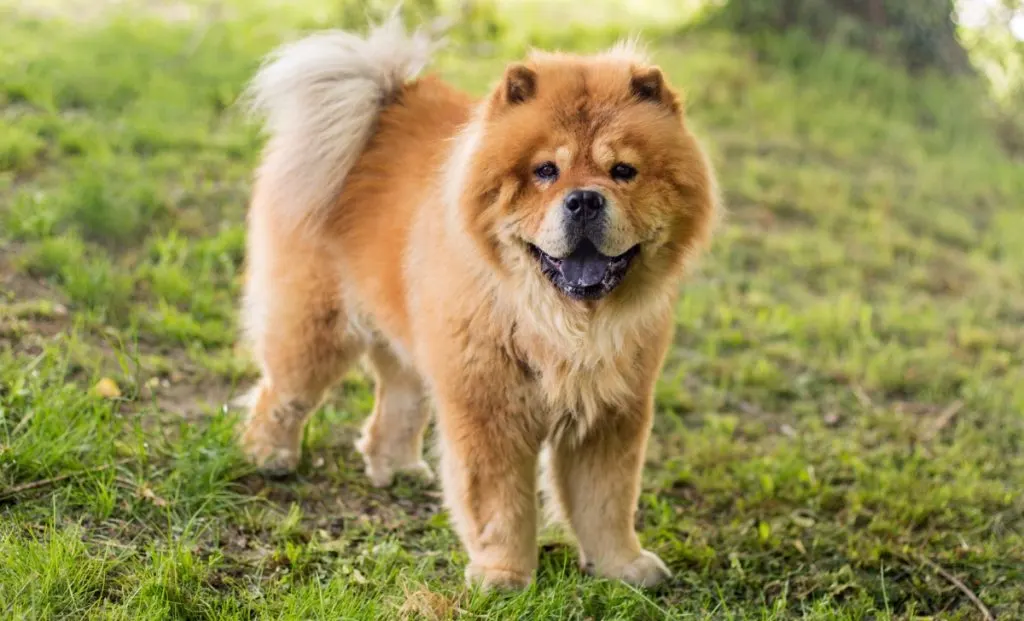
Life Expectancy: 9 – 15 years
Aside from having unique black-blue tongues and fluffy colorful coats, Chow Chows are known for their short longevity.
Chow Chows are also prone to thyroid disorders, autoimmune diseases, and cancer.
They also have a genetic predisposition to hip dysplasia and elbow dysplasia, as well as entropion (eyelid inversion).
8. German Shepherd
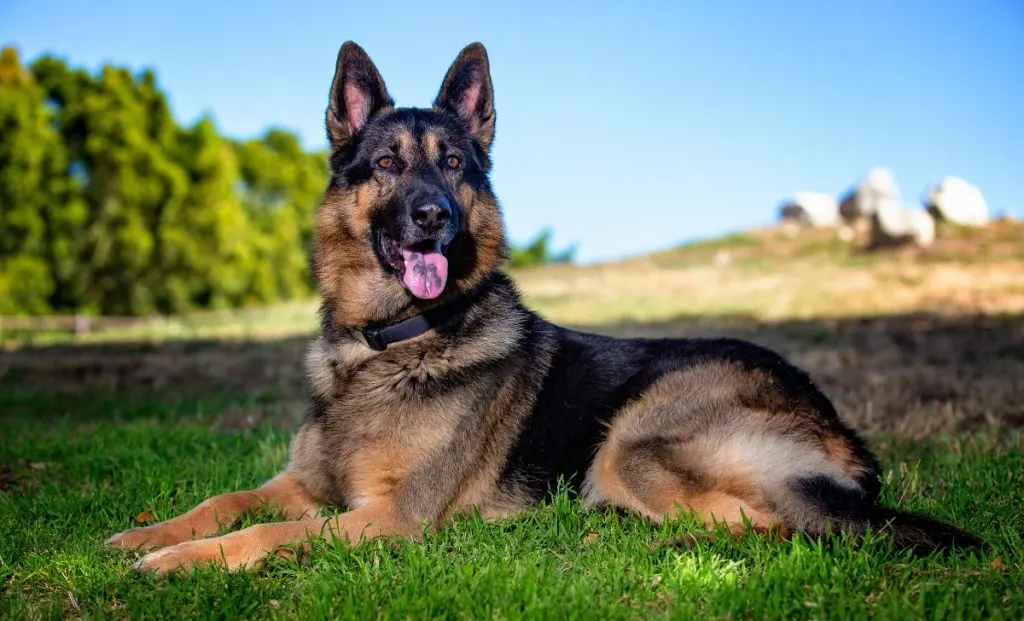
Life Expectancy: 9 – 12 years
German Shepherd’s unique charm and loyal nature have skyrocketed them to an impressive current popularity rank. They are one of the most popular and beloved dog breeds globally.
Scientific reports show that GSDs often face hereditary health issues. One of them being pancreatic acinar atrophy, which prevents their pancreas from making enough digestive enzymes.
Another serious condition is degenerative myelopathy. It gradually damages their spinal cord, eventually causing paralysis in older dogs. The cause of this condition has been linked to a gene mutation (SOD1) specific to this breed.
Additionally, some GSDs have blood clotting problems like Hemophilia A and von Willebrand Disease, making even small injuries or surgeries risky due to excessive bleeding.
9. Scottish Deerhound
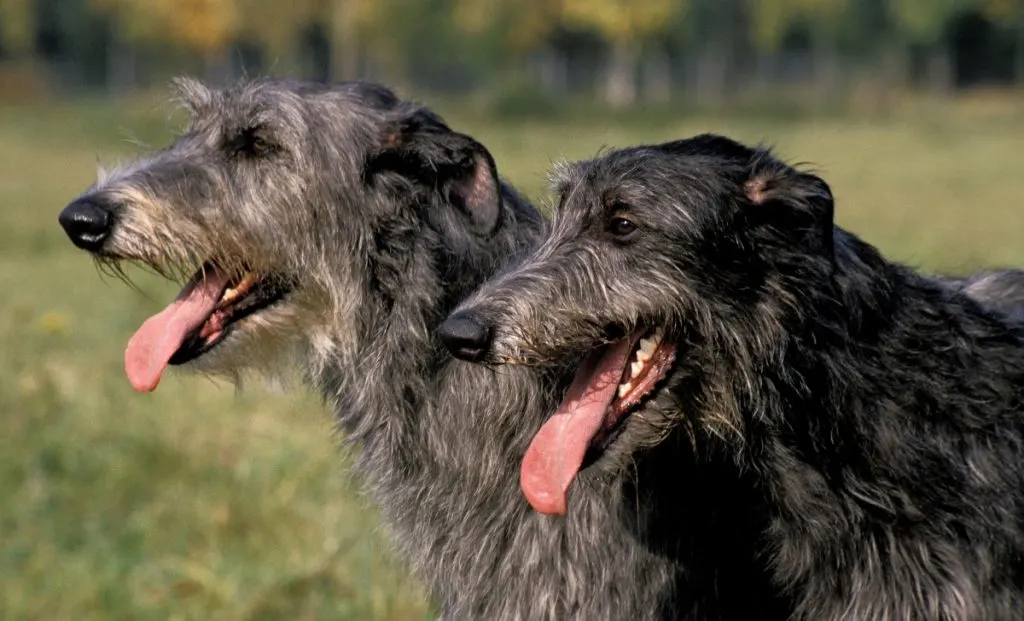
Life Expectancy: 8 – 11 years
Scottish Deerhound is a prized royal dog of Scotland. The breed is famous for its exceptional hunting skills, particularly in hunting deer.
These Deerhounds are predisposed to certain health issues, including cardiac problems and arrhythmias. Like many big dogs, they are also prone to orthopedic issues.
10. Cavalier King Charles Spaniel

Life Expectancy: 9 – 14 years
Cavalier King Charles Spaniels were named after King Charles II of England, who was famously fond of these charming dogs. They were also favored by English royalty and nobility.
I mean, who couldn’t adore them? They have such wonderful temperaments and it really makes us sad they do not stay longer with us.
Our little ones are predispositioned to heart conditions such as mitral valve disease and syringomyelia, a neurological disorder.
11. Perro De Presa Canario
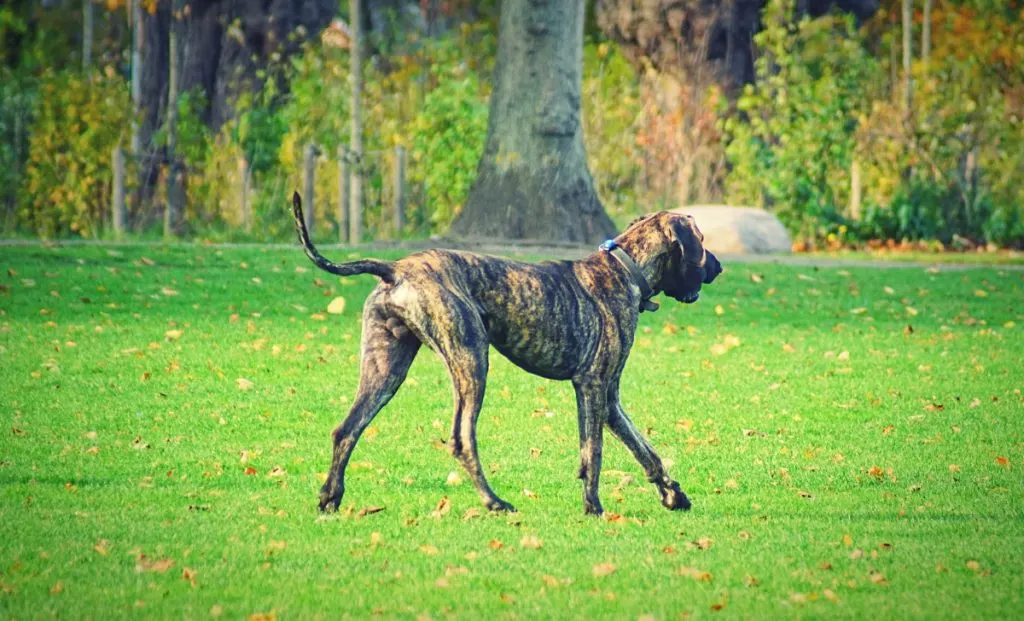
Life Expectancy: 9 – 11 years
Perro De Presa Canario are descendants of ancient Molosser dogs brought to the Canary Islands by Spanish conquistadors.
Known for their strength and bravery, they were historically used for herding cattle and guarding farms.
Such work can lead to accidents or injuries, especially for individual dogs with a protective instinct. This can also be a possible reason to shorten their lifespan.
Aside from that, they may be predisposed to histiocytic sarcoma, dilated cardiomyopathy (DCM), orthopedic conditions,
12. Newfoundland
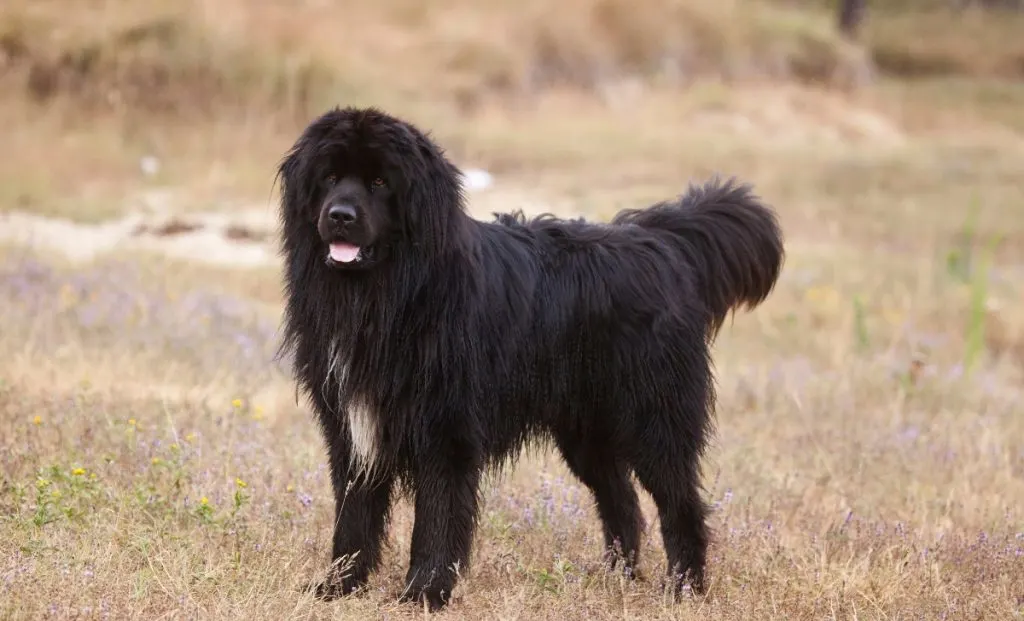
Life Expectancy: 8 – 10 years
Having been credited with saving numerous lives throughout history, our Newfoundlands earned themselves the nickname “the lifeguard dog.”
Our beloved Newfies are very big dogs.That means that they are predisposed to hip dysplasia, heart diseases, and joint cartilage deformity.
Discrete Subaortic Stenosis (SAS) is also a specific inherited trait in Newfoundland dogs, confirmed through breeding experiments.
13. Boerboel
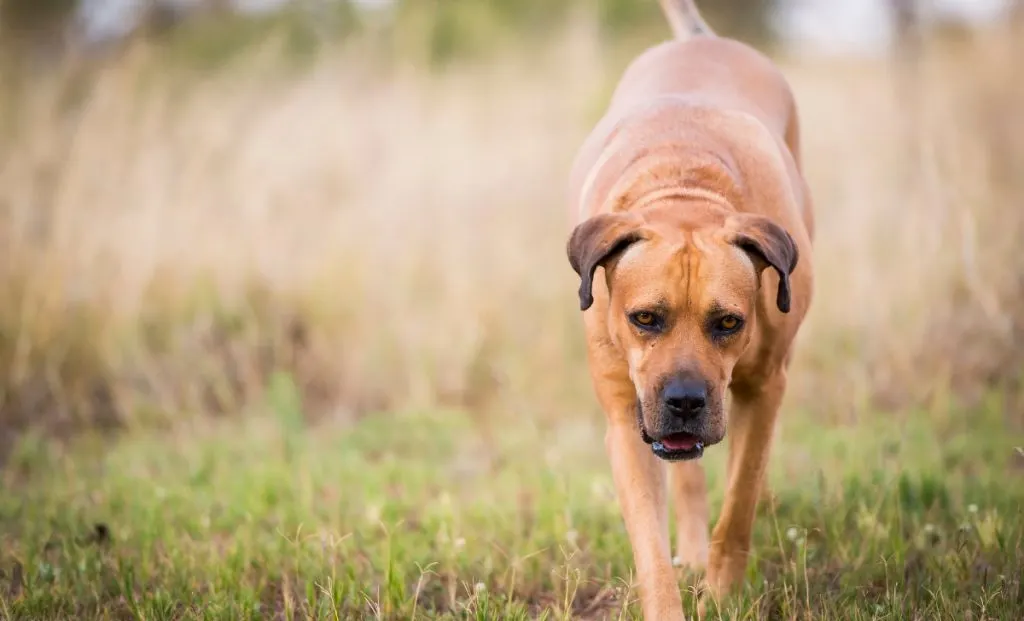
Life Expectancy: 9 – 11 years
Boerboels are huge dogs that can reach a massive size. Due to this, they are prone to many skeletal issues.
They can also be prone to certain eye disorders, such as entropion.
The most common cause of death for Boerboels is usually heart failure, possibly due to their predisposition to dilated cardiomyopathy (DCM).
14. Borzoi
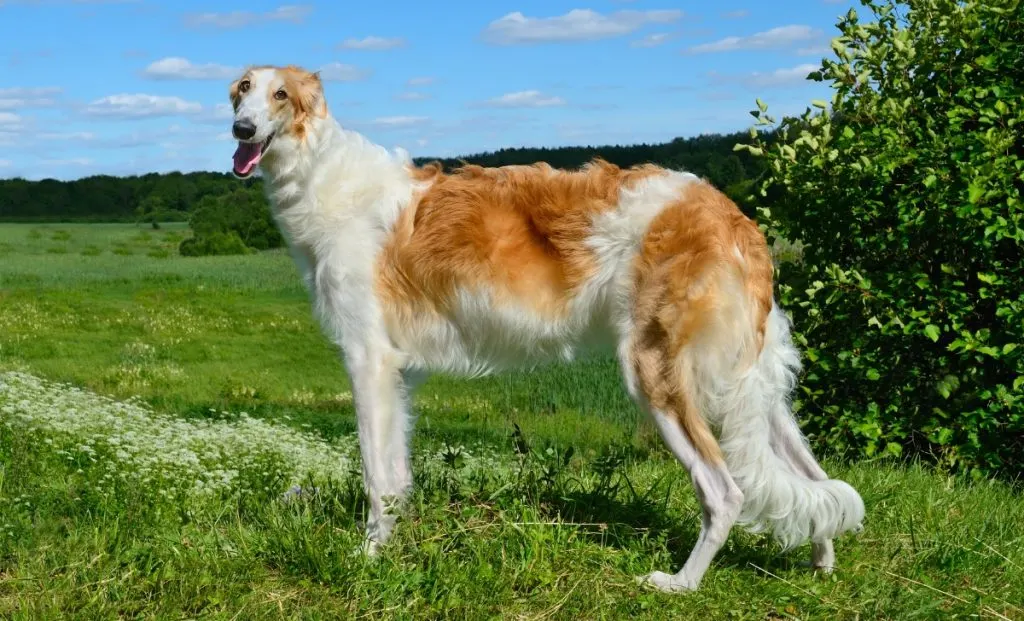
Life Expectancy: 9 – 14 years
Known for their exceptional speed, agility, and keen eyesight, Borzois were prized hunting companions and status symbols among the Russian nobility.
Apart from various health problems large dogs suffer from, some other dangers affect Borzoi’s lifespan.
Their lean build and relatively low body fat can make them more susceptible to temperature extremes and certain environmental factors.
A new study shows that Borzois are susceptible to cardiac diseases, while an older study suggests that they may be genetically prone to Lymphocytic Thyroiditis.
Their high prey drive and tendency to chase may put them at risk of accidents or injuries.
15. Rottweiler
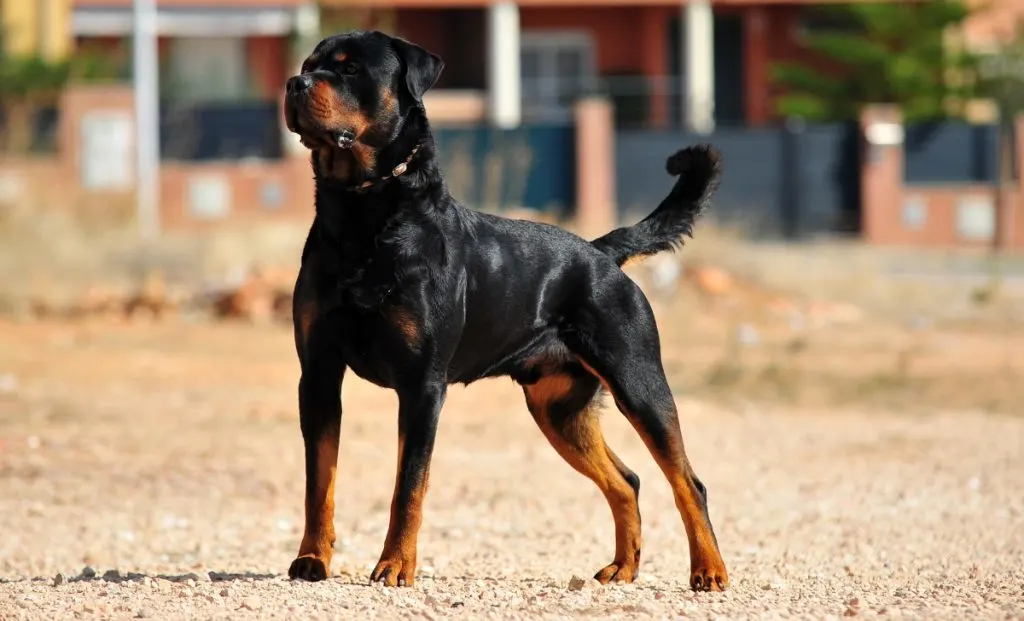
Life Expectancy : 8 – 10 years
After the fall of the Roman Empire, Rottweilers continued their role as versatile working dogs, herding livestock and protecting their owners’ property.
The reason behind Rottie’s short lifespan is their genetic predisposition to canine lymphoma, orthopedic diseases, and osteosarcoma.
16. Broholmer

Life Expectancy: 7 – 12 years
Broholmer is Denmark’s national dog breed, known for its calm and gentle temperament.
Being big dogs, Broholmers are more prone to orthopedic issues like hip dysplasia and arthritis, and health issues like heart defects and cancer.
They are also susceptible to eye conditions like entropion, ectropion, Progressive Retinal Atrophy, and cataracts.
17. Dogo Argentino
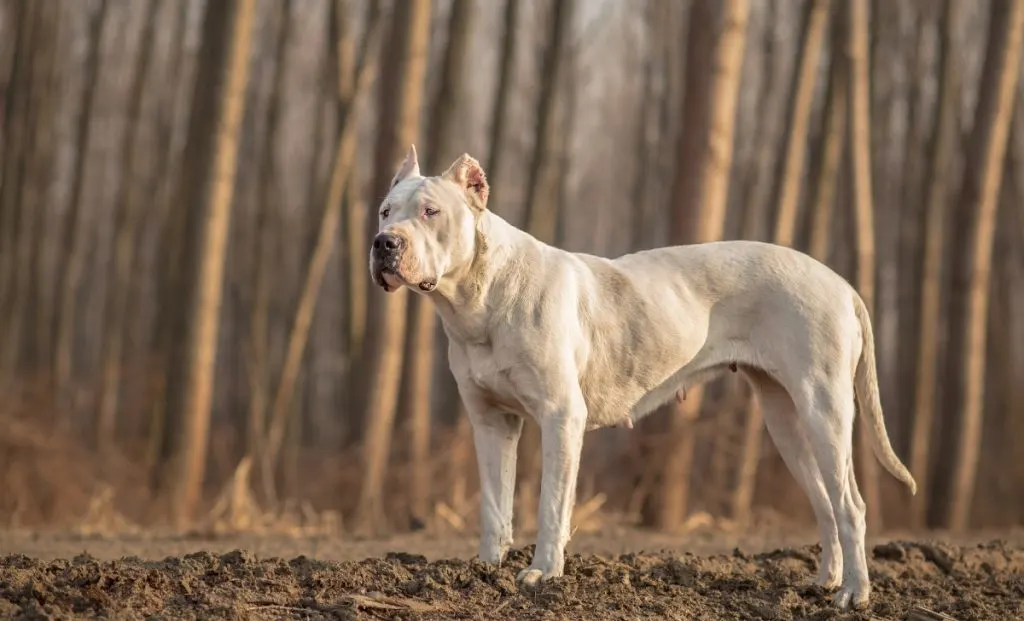
Life Expectancy: 10 – 12 years
These powerful working dogs are known for their fierce personality and immense loyalty. But, did you know that quite some of Dogo Argentino are born deaf?
One study found that about 74% of Dogo Argentino dogs could hear with both ears, around 20% were deaf in one ear, and about 5% couldn’t hear with either ear
Now, this may not be the reason why they live shorter than other breeds. You see, some diseases like Laryngeal paralysis can affect Dogo Argentinos, though you don’t see it in other breeds as much.
These dogs may also be prone to dental disease, which is not a surprise since it affects 80% of all dogs by age two. Left untreated, it can result in tooth loss and pose risks to organs like the kidneys, liver, heart, and joints.
18. Bulldog
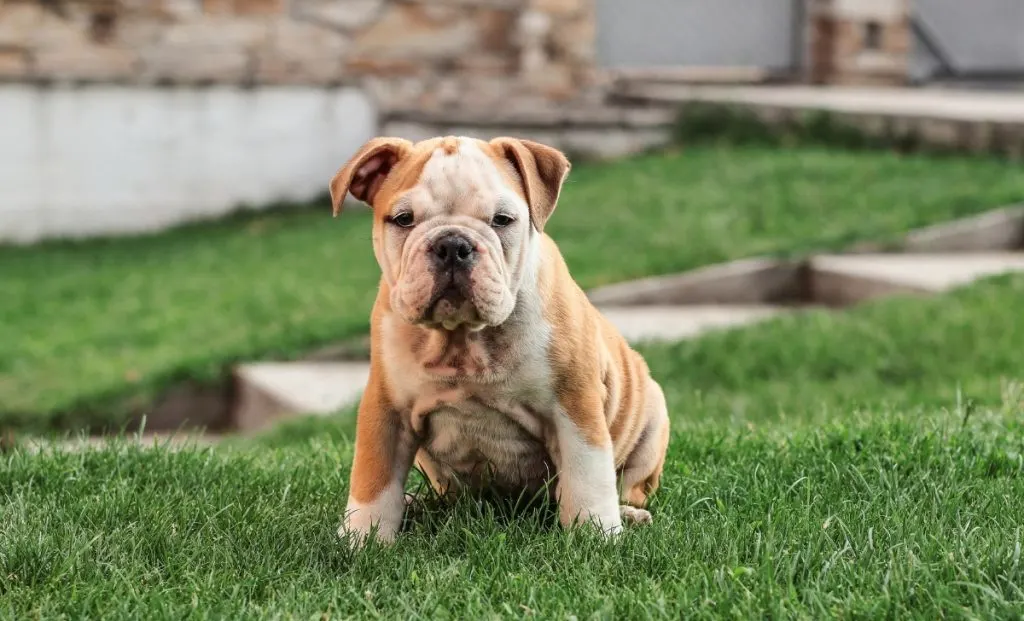
Life Expectancy: 10 – 11 years
Bulldogs have a distinctive and endearing appearance, with their wrinkled faces, pushed-in noses, and loose, jowly mouths, originally bred for bull-baiting in England.
Bulldogs often have shorter lifespans because of their unique anatomy, characterized by their brachycephalic (flat-faced) structure.
This conformation can lead to respiratory issues, overheating, and difficulty regulating body temperature, which may impact their health.
19. Leonberger
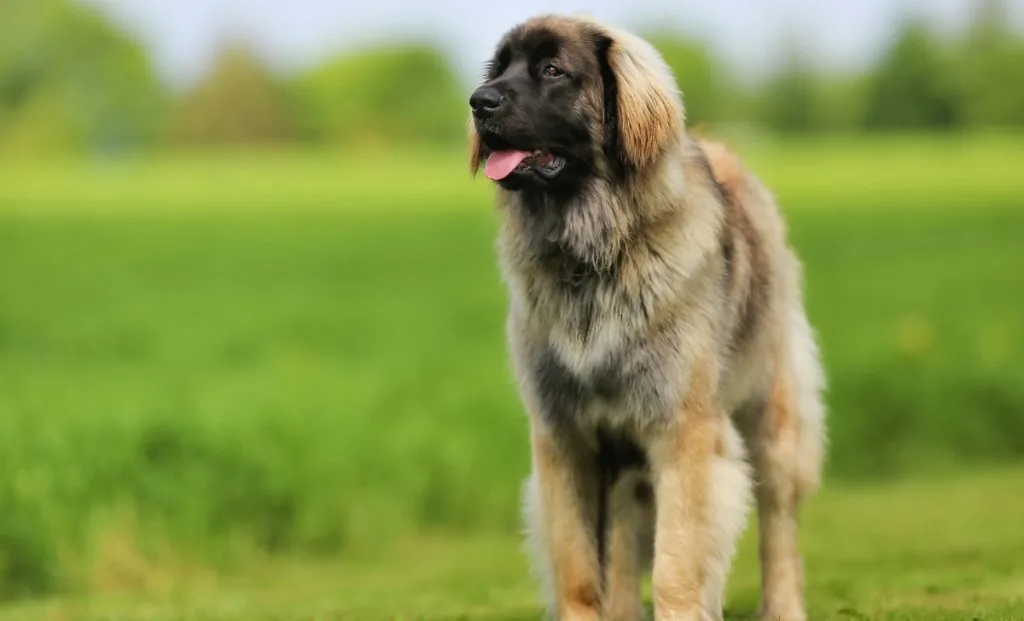
Life Expectancy: 8 – 9 years
Leonbergers were originally bred in the town of Leonberg, Germany, in the 19th century. These dogs were initially bred as companions and working dogs for royalty and aristocracy.
One of the biggest health issues that Leonbergers may have is gastric dilatation and volvulus, a serious type of bloat.
They are especially at risk of bone cancer, polyneuropathy, laryngeal paralysis, osteosarcoma, and dilated cardiomyopathy.
Why Do Large Dogs Live Shorter Than Small Dogs?
After reading through the various dog breeds with shorter lifespans, you may wonder why their size means less years on this planet. For me, it is heartbreaking that most of these gentle giants are not around that long.
One of the reasons could be that large dogs have quite a high metabolic rate, which makes their aging process faster. They require more energy as they tend to grow faster.
On the other hand, small dogs have a low metabolic rate, making them age slower.
It could also be that large dogs are prone to various cancers due to selective breeding. This is why people often think that selective breeding for the sole purpose of bigger size, may not be the best option for these dogs.
Due to their massive size, most of these gentle giants face skeletal problems throughout their lifetime. With their size comes heavy weight that may cause breathing issues and additional joint problems.
It is important to note that there are still ongoing studies revolving around this question. Hopefully, we will get a better idea of what is behind the short lifespan of large breeds.

Meet Iram, a devoted veterinarian, passionate dog lover, and current Ph.D. candidate at Utrecht University in the Netherlands. Seamlessly blending her roles as a vet and content writer, Iram channels her love for dogs into heartfelt narratives.
Since childhood, Iram nurtured a dream of becoming a vet, a passion that runs deep in her family. Having now fulfilled that dream, she’s eager to share her acquired knowledge. In her writing, Iram not only explores the emotional bond between humans and their canine friends but also integrates her veterinary expertise, offering readers a holistic understanding of their beloved pets.
